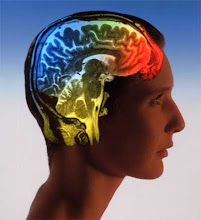 1) The model was proposed by Baddeley and Hitch in 1974
1) The model was proposed by Baddeley and Hitch in 19742) It is an alternative view of STM, which emphasises active processing (i.e. it doesn't see STM as a passive store of info).
3) WM is the part of our mind that we use for day-to-day tasks and problem solving
4) WM can achieve more than one task at once
5) The Central Executive is a system based on attention, and how your attention can be divided between tasks. It controls the other parts, which are known as 'slave systems'.
6) The Central Executive is modality-free, has a limited capacity, and is necessary for creative and non-routine processes.
7) Sound and language are mainly processed in the Phonological Loop, which has two parts...
8) The Articulatory Process or 'Inner Voice' is responsible for rehearsing words or numbers inside your head. It has a capacity of around two seconds. The Phonological Store is sometimes called the 'Inner Ear'.
9) The Visuo-spatial Sketchpad does routine visual processing, but is less well-researched. It is sometimes known as the 'Inner Eye'.
10) Recently, a new slave system, the Episodic Buffer, has been proposed. This is similar to Episodic LTM, except that it is temporary.

2 comments:
Ref:
Baddeley, A.D. and Hitch, G. (1974). Working memory. In Bower, G.H. (Ed.) The Psychology of Learning and Motivation, Vol 8. London: Academic Press.
Also, Gathercole & Baddeley (1993)described how the Phonological Loop should be seen as having two parts - the Phonological Store and the Articulatory Process.
Gathercole, S.E. and Baddeley, A.D. (1993). Working Memory and Language. Hove: Erlbaum.
Post a Comment